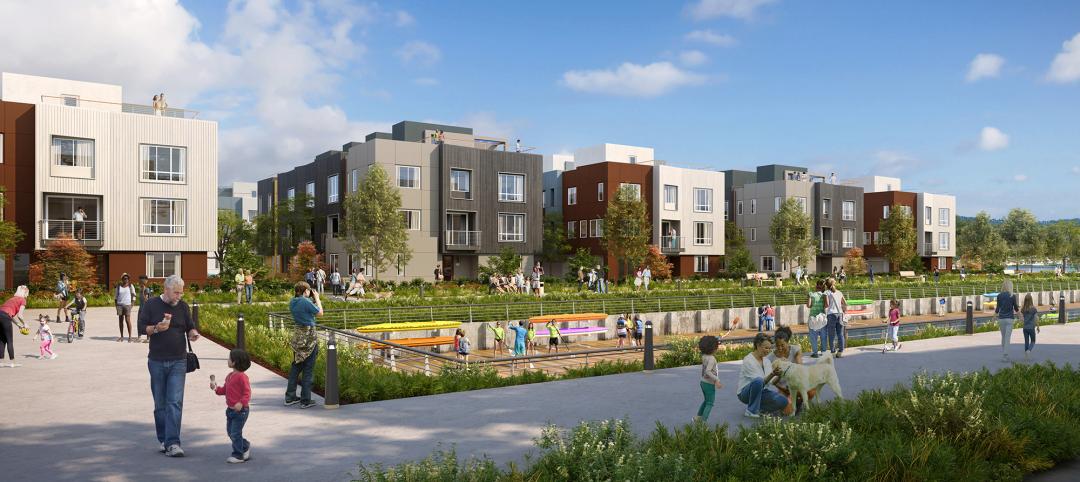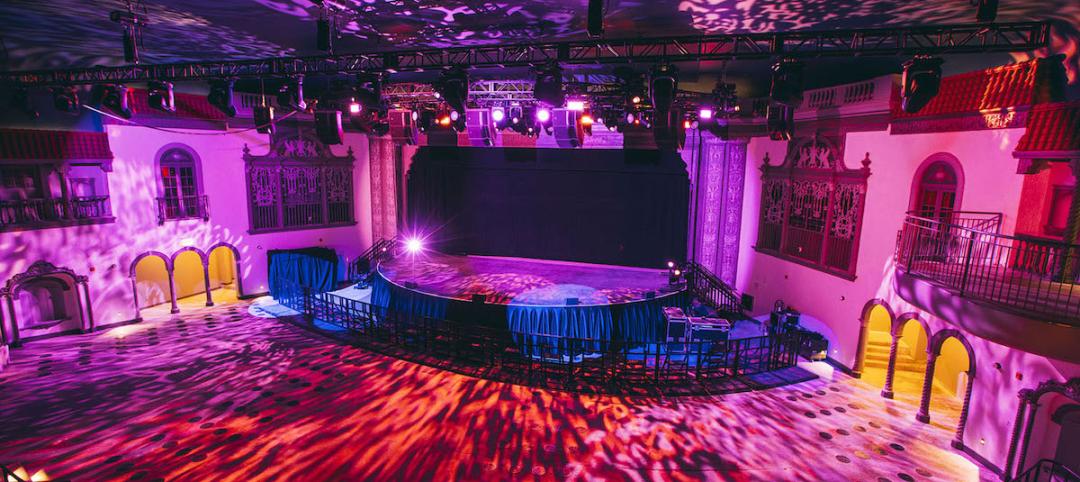Much has been made lately about converting vacant office space to laboratory use. However, with growing inventory in warehouse space as the distribution center market flattens, adaptive reuse of available warehouse space for life sciences applications is a concept that is coming to the fore. While it is not a simple conversion, it is easier than office space. This reallocation commands higher rent which is compelling for owners or developers who are facing current and future vacancies. This conversion can also be applied to laboratory cold storage, cGMP storage, or cGMP production.
What makes warehouse space ideal for conversion to laboratory use?
Warehouse space is essentially a large empty shell with open space and high ceilings which, ideally, is placed along major routes and supply chain corridors. These factors make it ideal for lab conversions. For office to lab, you may encounter slab-to-slab height restrictions that squeeze the ability to fit in the actual lab space requirements. Plus, the infrastructure, like ventilation, plumbing and power that is essential to a functioning life science application could be restricted.
Warehouse layouts provide space flexibility that can be used for multiple purposes, such as lab space for research, areas for product development or production, warehouse space for storage and on-site testing facilities all under one massive roof. Any one of which could be the entirety of the facility.
While it may be ideal on paper to initiate a conversion, there are important considerations that a developer should understand from the onset of a potential project which can drive up costs and could derail the project.
1. Roof structure considerations
A warehouse roofing structure does not typically allow for the use of heavy equipment that is standard in a laboratory environment, such as cooling towers or custom air handling units. Structural retrofitting is required to increase weight bearing capacities. This could involve creating a whole new structural system or, at a minimum, dropping new columns to support and distribute the weight.
In some circumstances, a standalone structural system or an interstitial space can be built within the framework of the existing warehouse which is independent of the original “shell” of the structure. This reduces the overall area that needs to be supported and gives the flexibility of a two-level system layout with mechanical and/or electrical equipment on the upper level and storage on the lower level.
Another alternative would be to run new columns all the way up through the roof and adding more steel to the structure to support the equipment above the roofline. Development of structural options must be considered for the actual use case scenario for optimal infrastructure design.
2. Air change rates
Laboratories require strict air change rates that are set by the American Society of Heating, Refrigerating and Air Conditioning Engineers (ASHRAE), with additional requirements that may be dictated by the National Institute of Health (NIH) and the Center for Disease Control (CDC). (1) Basic lab ventilation requires 6 to 12 air changes per hour and can climb upwards of 20 air changes per hour for cGMP spaces. So, creating a 10-foot lab room versus leaving the original 23-foot warehouse height would allow for lower Cubic Feet per Minute (CFM) rates and would not create air volume inefficiency.
One way this can be achieved is by creating a ceiling lid to the new lab space. In this scenario, the ceiling is located at a certain lower elevation and sealed. Then a plenum is added above the ceiling within the space up to the deck. This will give you the required air change rates and pressurization within a more compact space which utilizes less resources, energy and money.
Additionally, plug and play modular systems—pre-built labs that include HVAC systems—can be placed directly within the warehouse structure. These “pods” are connected to a remote condensing unit on the roof with refrigerant lines to quickly create a fully contained lab. New design options are being developed all the time and will only increase the effectiveness of using older warehouse spaces for this repurpose.
3. Plumbing, gas, and power
Water, gas, and power requirements could be exponentially higher in a laboratory environment. Standard lab infrastructure will require special sinks, washing/sanitizing facilities, and waste neutralization. Not to mention the water use of the actual equipment. All of this increases the wastewater management at the location and may require a larger water line for the facility.
Gas pipelines into the warehouse may not be adequate to run HVAC operations and will need to expand to meet new capacity requirements. Electrical service may need to be replaced due to its age, reliability and lack of sufficient capacity. The facility may also require emergency power that is not currently available. All these new services will require space and capital costs to upgrade, replace or install.
In converting existing warehouses to lab type spaces, some owners have chosen to provide for future flexibility by providing scalable infrastructure now. This prepares for additional capacities in case of a future retrofit that requires greater volumes later.
Do your due diligence
Exploration of this kind of facility conversion, and new market pursuits, requires due diligence to understand the factors that could impact whether your facility is suited for the laboratory market. We recommend starting with a facilities assessment study of your warehouse to have a full understanding of your actual structure, condition and capacity of existing equipment, and the anticipated new loads for electric, water, gas and fire protection. Based upon the assessment, a review of current local permit processes and zoning restrictions would also be recommended to see if there could be anticipated permitting delays for the conversion. From there, a developer/owner can truly determine if increased rental income and tenant occupancy outweighs the conversion costs to a life sciences piece of real estate.
1. Laboratory News – “Converting offices to laboratory space – understanding the needs of the LSCG sector” – Steven Anderson, Jonathan Andrew - 6/2021
Related Stories
K-12 Schools | May 13, 2024
S.M.A.R.T. campus combines 3 schools on one site
From the start of the design process for Santa Clara Unified School District’s new preK-12 campus, discussions moved beyond brick-and-mortar to focus on envisioning the future of education in Silicon Valley.
Adaptive Reuse | May 9, 2024
Hotels now account for over one-third of adaptive reuse projects
For the first time ever, hotel to apartment conversion projects have overtaken office-to-residential conversions.
MFPRO+ Special Reports | May 6, 2024
Top 10 trends in affordable housing
Among affordable housing developers today, there’s one commonality tying projects together: uncertainty. AEC firms share their latest insights and philosophies on the future of affordable housing in BD+C's 2023 Multifamily Annual Report.
Retail Centers | May 3, 2024
Outside Las Vegas, two unused office buildings will be turned into an open-air retail development
In Henderson, Nev., a city roughly 15 miles southeast of Las Vegas, 100,000 sf of unused office space will be turned into an open-air retail development called The Cliff. The $30 million adaptive reuse development will convert the site’s two office buildings into a destination for retail stores, chef-driven restaurants, and community entertainment.
Adaptive Reuse | Apr 29, 2024
6 characteristics of a successful adaptive reuse conversion
In the continuous battle against housing shortages and the surplus of vacant buildings, developers are turning their attention to the viability of adaptive reuse for their properties.
Mixed-Use | Apr 13, 2024
Former industrial marina gets adaptive reuse treatment
At its core, adaptive reuse is an active reimagining of the built environment in ways that serve the communities who use it. Successful adaptive reuse uncovers the latent potential in a place and uses it to meet people’s present needs.
Mixed-Use | Apr 9, 2024
A surging master-planned community in Utah gets its own entertainment district
Since its construction began two decades ago, Daybreak, the 4,100-acre master-planned community in South Jordan, Utah, has been a catalyst and model for regional growth. The latest addition is a 200-acre mixed-use entertainment district that will serve as a walkable and bikeable neighborhood within the community, anchored by a minor-league baseball park and a cinema/entertainment complex.
Adaptive Reuse | Apr 5, 2024
McHugh Construction completes restoration of Chicago’s historic Ramova Theatre
Adaptive reuse project turns 1929 cinema into a live performance venue, adds a brewery and a taproom, and revives the Ramova Grill in Chicago’s Bridgeport neighborhood.
Adaptive Reuse | Mar 30, 2024
Hotel vs. office: Different challenges in commercial to residential conversions
In the midst of a national housing shortage, developers are examining the viability of commercial to residential conversions as a solution to both problems.
Cultural Facilities | Mar 26, 2024
Renovation restores century-old Brooklyn Paramount Theater to its original use
The renovation of the iconic Brooklyn Paramount Theater restored the building to its original purpose as a movie theater and music performance venue. Long Island University had acquired the venue in the 1960s and repurposed it as the school’s basketball court.

















